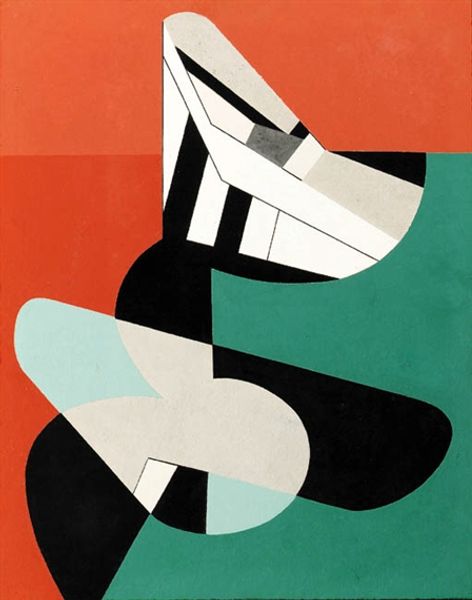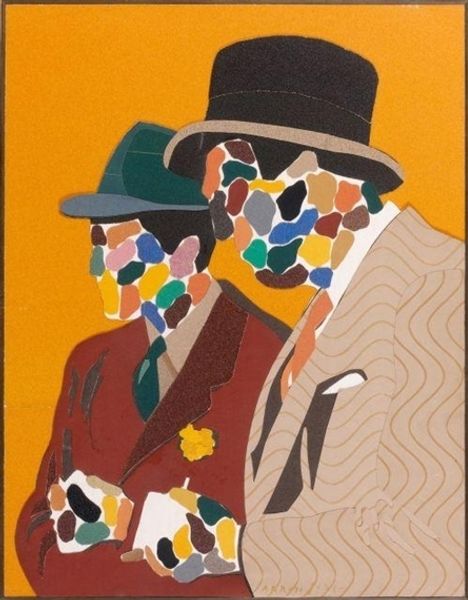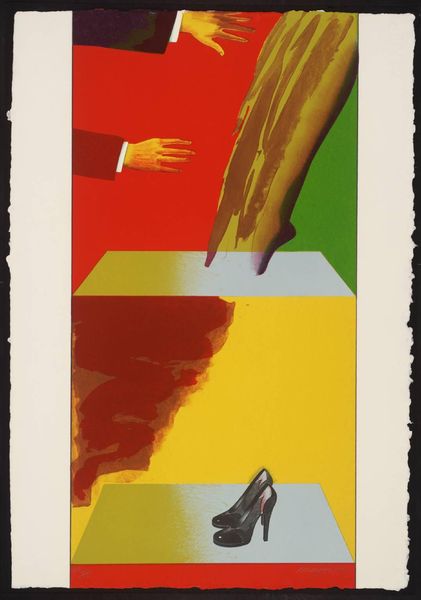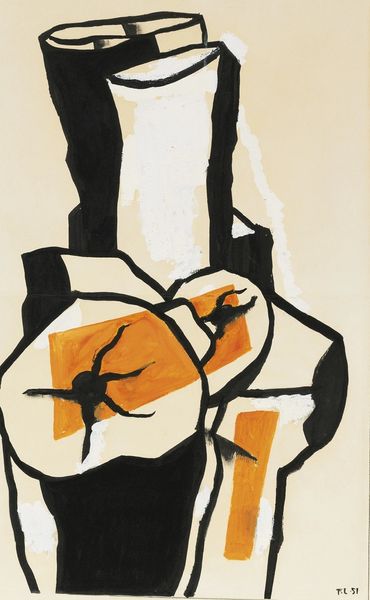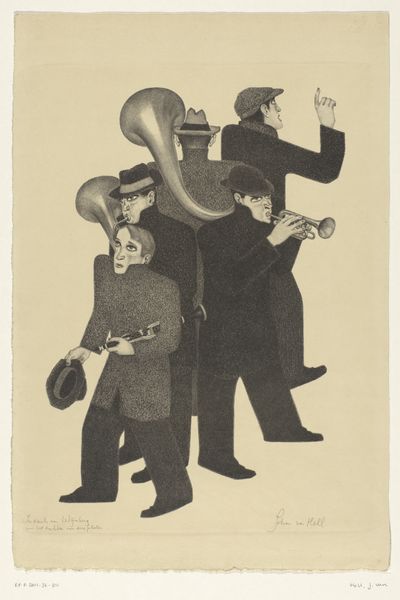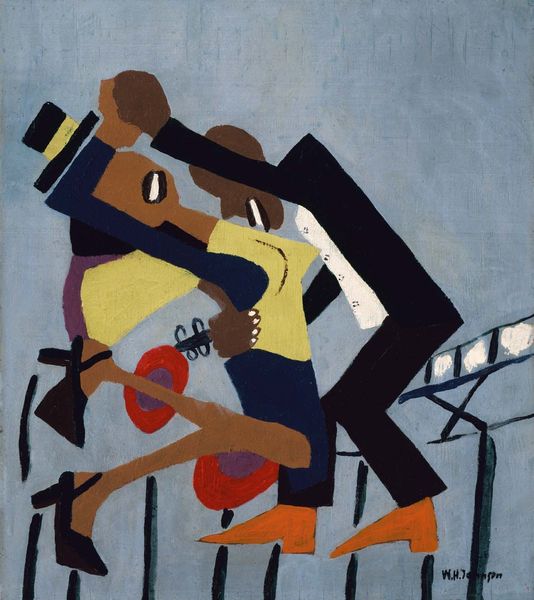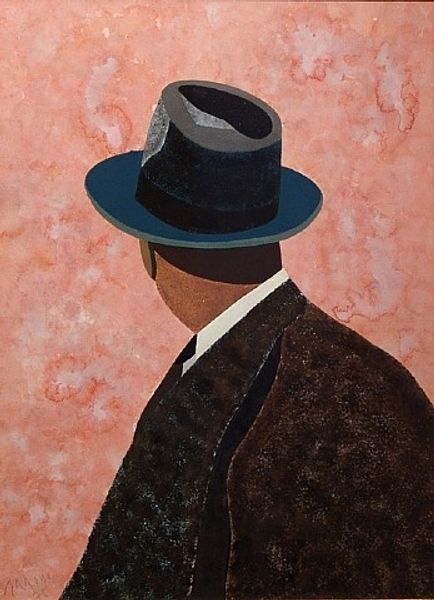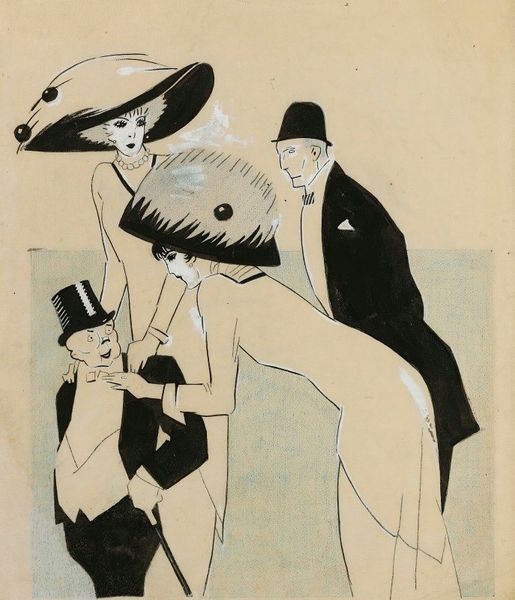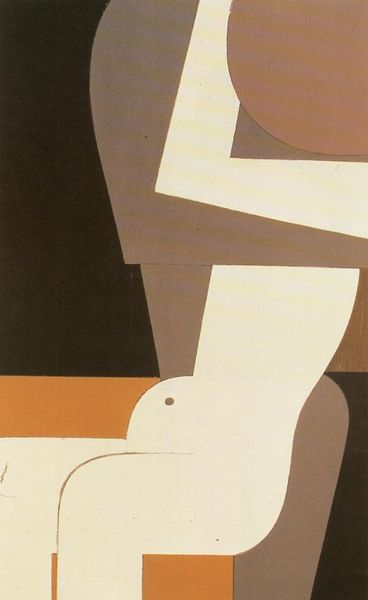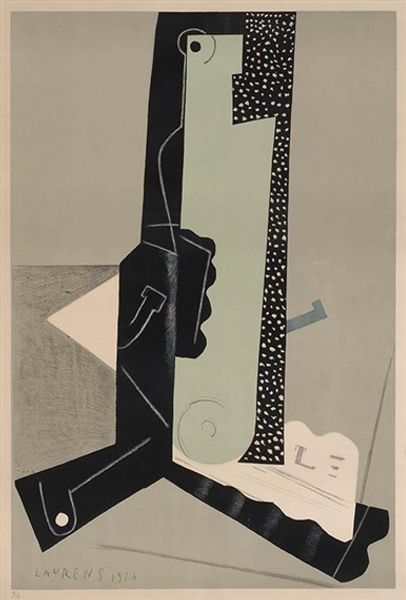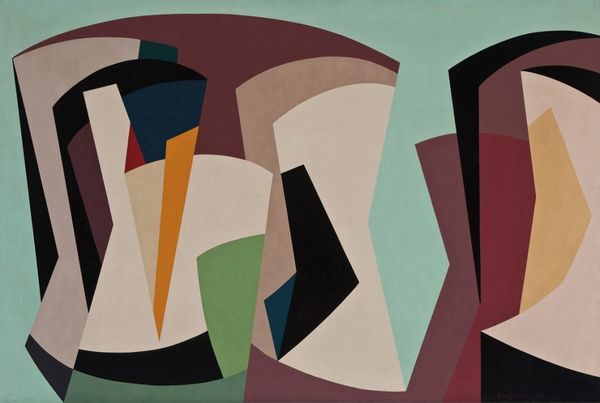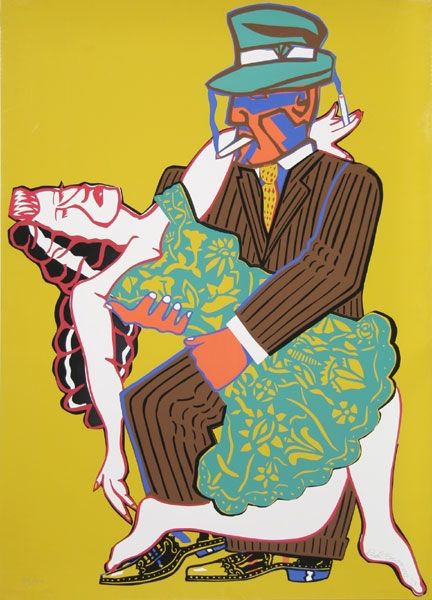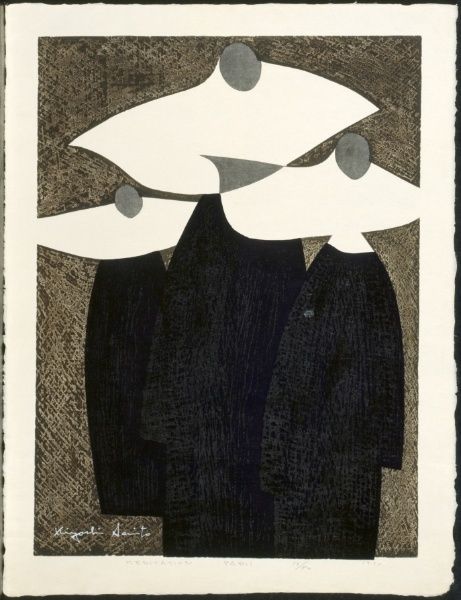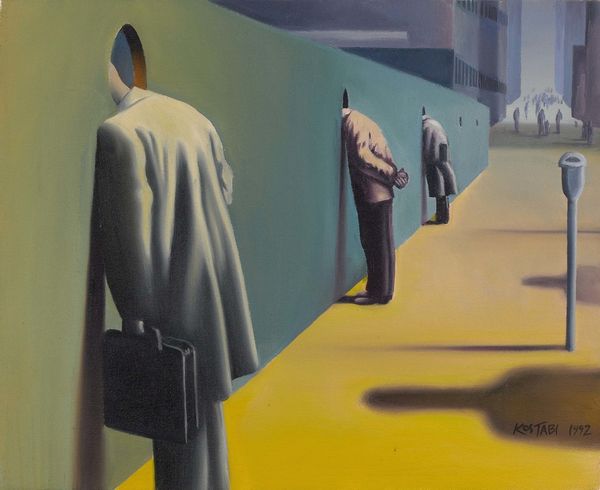
acrylic-paint, poster
art-deco
caricature
caricature
acrylic-paint
geometric
poster
Copyright: Public Domain: Artvee
Editor: Here we have "Mossant," a poster created by Leonetto Cappiello in 1938, employing acrylic paint. It's an arresting image, almost a totem pole made of hats. The bright yellow backdrop really makes the hats pop. What's your take on this piece? Curator: Well, placing it in the context of the late 1930s, this image becomes really interesting. Think about the rise of fascism and the visual language being employed across Europe. This poster, while seemingly just advertising hats, participates in a broader culture of image-making. Cappiello, an Italian working in France, is navigating this very complex political landscape. Editor: That’s fascinating. I hadn’t considered the political implications of something as seemingly simple as a hat advertisement. So the hats themselves, stacked so deliberately... Curator: Exactly. How do you interpret the arrangement? Is there an implied hierarchy? Who gets to wear what hat? Commercial art often reinforces or subtly challenges existing social structures. The geometric quality, a nod to Art Deco, feels very modern but also a bit rigid, don't you think? Editor: Yes, now that you mention it, there is something undeniably stiff about the composition. It's not just about selling hats; it's about order, presentation, maybe even control. I'm definitely seeing this poster in a new light now. Curator: And that’s precisely the point! By considering the social and political climate, a seemingly simple advertisement becomes a fascinating window into a particular moment in history and its influence in image construction. Editor: Thanks. This has really opened my eyes to how even commercial art can be a rich source of historical insight. Curator: Indeed. Every image, regardless of its original intention, participates in a broader visual dialogue within its culture. It really makes you think about what these images intended and didn’t intend to tell us!
Comments
No comments
Be the first to comment and join the conversation on the ultimate creative platform.
